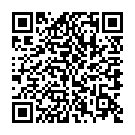|
|
|
| Module code: MST2.AEL |
|
|
2V+4P (6 hours per week) |
|
7 |
| Semester: 4 |
| Mandatory course: yes |
Language of instruction:
German |
Assessment:
Written exam 120 min. (100%) + practical course (ungraded)
[updated 05.10.2020]
|
MST2.AEL (P231-0022) Mechatronics and Sensor Technology, Bachelor, ASPO 01.10.2019
, semester 4, mandatory course
MST2.AEL (P231-0022) Mechatronics and Sensor Technology, Bachelor, ASPO 01.10.2020
, semester 4, mandatory course
|
90 class hours (= 67.5 clock hours) over a 15-week period.
The total student study time is 210 hours (equivalent to 7 ECTS credits).
There are therefore 142.5 hours available for class preparation and follow-up work and exam preparation.
|
Recommended prerequisites (modules):
MST2.ELE Electronics
[updated 29.03.2021]
|
Recommended as prerequisite for:
MST2.SPR Mechatronics Project in English
[updated 12.04.2021]
|
Module coordinator:
Prof. Dr. Kai Haake |
Lecturer:
Prof. Dr. Kai Haake
[updated 29.03.2021]
|
Learning outcomes:
After successfully completing this course, sstudents will be able to carry out the work steps necessary for developing a circuit board from a circuit diagram.
They will be able to simulate electronic and sensor-technical functional modules in a targeted and independent manner.
The entire development process from sensor evaluation circuits, signal interfaces and actuator control circuits to series production readiness will be worked through independently.
[updated 05.10.2020]
|
Module content:
The procedure for circuit design will be explained based on selected examples of sensor evaluation circuits etc. Required special components will be discussed if necessary. A special focus will be put on the guidelines for the awarding of the CE mark and its specific application to circuit design and product design.
The manufacturability and the related costs of possible solutions will be analyzed in the form of case studies.
PCB development with the help of and based on the EDA program ARIADNE
Circuit diagram module, database module, layout module, CAM module (GC-Prevue)
Circuit simulation with the help of and based on the program WinSpice
Introduction, program operation, circuit description (structure of a Spice file, components, model instructions, subcircuits), control instructions, types of analysis, types of output, simulating application circuits
[updated 05.10.2020]
|
Teaching methods/Media:
Lecture, projector, practical exercises
[updated 05.10.2020]
|
Recommended or required reading:
Lecture notes, application instructions from semiconductor manufacturers, data sheets
Ulrich Tietze / Christoph Schenk: Halbleiterschaltungstechnik, Berlin, Springer Verlag
Jacob Millman / Arvin Grabel: Microelectronics, New York, McGraw _ Hill Book Company
Trainingshandbuch _ARIADNE_ und Demosoftware _ARIADNE_ Version 8.5, Ulm, Fa. CADUL
E.E.E. Hoefer / H. Nielinger: SPICE , Berlin, Springer _ Verlag
Mike Smith: WinSpice3 User´s Manual
[updated 05.10.2020]
|


